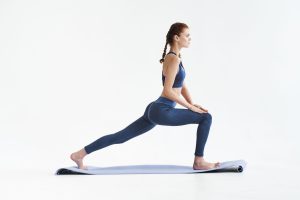The Anatomy of Healthy Elbows and Tendinitis
The elbow is a crucial joint to keep healthy for those looking to maintain their independence. The elbow is a hinged joint consisting of the humerus, radius, and ulna, which are all sheathed in cartilage at their ends. This cartilage is flexible connective tissue that absorbs shock and reduces friction as the joint experiences impact and slides. Across your body, the ligaments function is to connect bone to bone and form joint capsules. More specifically to the elbow, ligaments attach the humerus and the ulna, providing the primary source of elbow stability. The two most important ligaments in relation to elbow joint health are the medial collateral ligament, which is attached to the inner side of the elbow, and the lateral collateral ligament that attaches to the outer side of the elbow. While ligaments connect bone to bone, tendons are the connective tissue that muscle to bone. The biceps tendon and the triceps tendon attach muscles with their respective names to bone. The muscles in the forearm that flex and extend your fingers connect to tendons that attach to the humerus. It is important to understand the functions of the tendons and muscles that make up your joints in order to take proper care of your elbow and ensure that you are not overtraining, recovering sub-optimally, or using unhealthy movement patterns on a daily basis for work or athletics.
Elbow Injuries
Overuse or overload of the elbow without sufficient stretching can lead to two common forms of elbow tendinitis; lateral epicondylitis (tennis elbow) or medial epicondylitis (golfer’s elbow). Lateral epicondylitis occurs on the lateral, or outer side, of the elbow. High repetitions of movements that flex and rotate the wrist irritate and inflame the fibrous tissue of the tendon. Symptoms of this condition include pain or discomfort located on the lateral side of the elbow, weakness in the lateral muscles of the forearm, and sharp irritation when lifting or twisting items. Medial epicondylitis causes pain in the more medial religion of the elbow joint. Construction work, swinging golf clubs or baseball bats, throwing patterns, and other repetitive movements that involve elbow flexion and extension are all causes of medial epicondylitis.
To avoid developing these conditions, do what you can to limit specific body motions that can lead to tendonitis and that are repeated too often. However, for some people whose occupations or athletics demand repeated movements of the elbow joint, overuse can be difficult to avoid. In these cases, efficient stretching, recovery, balanced diet and avoidance of excessive overload is going to be even more important. Dynamic and static stretching, rest, and sufficient nutrition are well known as some of the most important things you can do to live a strong and healthy life, and proper strength jumps and patience are no different. Slow, progressive jumps in weight or difficulty of activities is the best way to avoid excessive overload that leads to tendonitis. For example, when a professional weightlifter attempts an exercise at maximal weight they first warm up by performing that exercise at no weight, then take small, incremental jumps up to the more difficult weight to ensure that their body is prepared. The same rules should apply to those who participate in team sports or are required to perform manual labor for their occupation. Warming up with stretching then gradually increasing resistance to prepare your body for a more challenging load will help you perform better, and decrease your chance of injuries like tendonitis.
Static and Dynamic Stretches for the Hip Flexors and Surrounding Muscles
Warm-up with light cardio for five to ten minutes to prepare your body before performing these static and dynamic stretches. Hold stretches for thirty seconds to one minute at a time while building up and completing two to four repetitions where muscles feel tight. Flexibility exercises are an important part of any exercise plan to improve joint function, and they stimulate increased blood flow and relaxing targeted muscles. Keep an eye on our website at Melitafitnessrehab.com for more information about recommended stretches and exercises. You can also join our pain management seminar.
- Isometric wrist extension stretch
- Isometric wrist flexion stretch
- Banded wrist extension
- Banded wrist flexion
- Golfer’s elbow stretch
- Full range of motion wrist rotations
- Pronation to supination of forearm
- Radial deviation wrist stretch
Written by Adam Lynn



